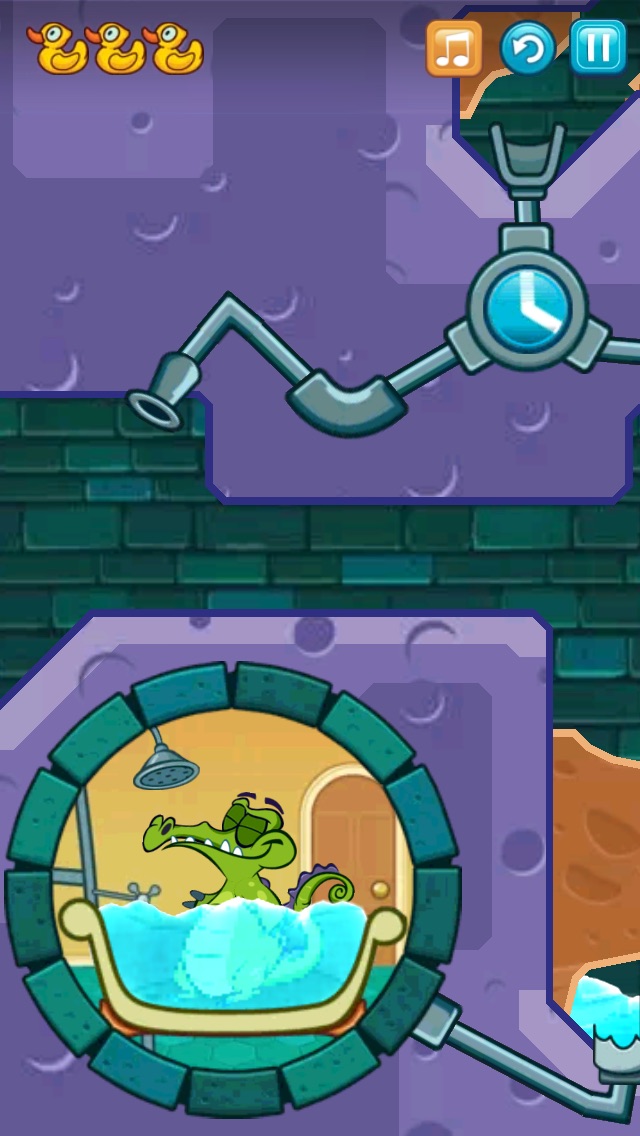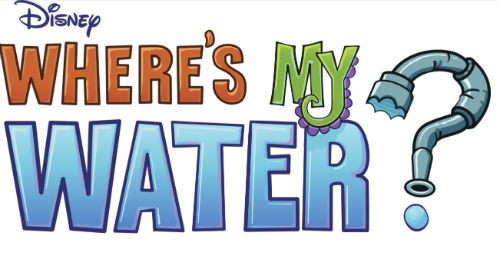In 2011, Disney Mobile published a small puzzle game that turned out to be quite a hit — Where’s My Water?. Some people accused Disney of ripping off Rovio’s popular title, Angry Birds, but arguably, Disney Mobile was innovating by using water based physics in an innovative way and creating a new IP just for the computer gaming market.
We take a quick look at the game’s development and discuss why it’s better than Angry Birds.
Development and Spin-Offs
Disney was no stranger to giving other well-known developers the rights to make games, such as Capcom and Virgin Interactive in the 1990s, the latter of which developed the excellent movie tie-in game for The Lion King.
However, development for Where’s My Water? was done by Creature Feep, a relatively unknown development team that was actually part of Disney Mobile. Interestingly, ‘creature feep’ is a well-known internet Spoonerism of ‘feature creep’. This refers to a piece of software doing way more than originally intended with future updates (such as all the needless features now in iTunes, like Apple Music).
Indeed, perhaps this name was a nod to the spin-offs the game would eventually have. Its success spawned a cartoon show, a Hasbro board game, a web series, and sequels with other well-known Disney characters, such as Where’s My Mickey?
The team was headed by Timothy FitzRandolph, who developed the Xbox indie hit JellyCar, which would be later ported to iOS. Disney later acquired the rights to this game and its sequel, JellyCar 2.
According to FitzRandolph in an interview with USA Today, the focus during early development was on water physics and letting the player use the tactile nature of a touchscreen to guide the water. This makes the game distinct from the slingshot physics of Angry Birds, and is genuinely something other games weren’t attempting at the time. It shows that Disney is trying to diversify and not copy other trends du jour.
Swampy was the first new Disney character to debut within a game as opposed to a film or TV. He was voiced by Justin T. Bowler (who mainly speaks in Muppet like grunts), and it showed a change in strategy for the company, which was perhaps an influence on their later game-focused developments, such as using Amiibo like existing Disney assets for Disney Infinity.
Plot and Gameplay
The main (and very basic) plot of the game is that Swampy, an alligator living in the sewers, feels constantly dirty and wants to wash all the sewer gunk off in the bathtub. Thwarting him is fellow alligator Cranky, who uses crafty means to stop Swampy getting his water supply. You, as the player, must make sure Swampy gets his water by using your finger to guide the water from a running tap or other water source, such as a pool of water.

As you progress through the game, various obstacles get in your way, such as green ooze, which melts dirt, and purple poison, which must not come into contact with the water you are trying to get to Swampy.
This is by far one of the best uses of tactile puzzle solving that a smart device has to offer now, let alone back in 2011. I find it less gimmicky than other apps such as
Angry Birds, as using your digits is essential rather than tacked on like some platformers or RPGs ported to smart devices. Given that it’s a Disney app aimed at kids, the difficulty level isn’t too hard, either.
Where it ramps up is at completionist level, as an additional objective is to collect all three rubber ducks by splashing them with water until they disappear (similar to the stars in Angry Birds). However, unlike Angry Birds, water rather than air (and slingshots) controls the physics of the game, and there are lots of new challenges to keep you on your toes.
Where’s My Water? also lets you play as other characters, such as Cranky and Allie. In Cranky’s levels, the objective is to collect the purple ducks by filling them with poison. In Allie’s levels, your objective is to get water to all the musical notes in a specific order. I found it very addictive and I enjoyed the animated vignettes between each group of levels, which were like a digital comic book. Indeed, Angry Birds‘ later incarnations borrowed this comic book style to tell their stories — this is a clever way to avoiding huge spending on re-recording voice acting for localization.
Music
The music and sound effects fit the tone of the app. However, in my version, the music and sound effects can cut out. Perhaps this can be fixed in future updates.
Where’s My Water in 2017 How Its Legacy Compares to Angry Birds
Swampy and friends still hold up in comparison to the games of 2017. It may not have the sheer frustration and retro styling of other indie games like Super Meat Boy or VVVVV, but it is a unique concept.
Its positive reception contributed to many ports — with Windows Phone, Blackberry, and Android all receiving their own versions of the game.
Interestingly, following the lackluster reception of Disney Infinity 2, Disney announced in December 2016 that it would be shutting down its video game business entirely. Perhaps this is not surprising, given their acquisitions of Lucasfilm and Marvel since 2012, but it is a blow to developers who want to make that mark through funding from larger organizations.
By contrast, the Angry Birds movie, which came out in 2016, missed the hype train surrounding the original mobile title — and received a lowly 46% aggregate score on Metacritic. That said, as the Angry Birds Wiki page explains, the game has spawned a successful and tactile arcade experience in which you “become the slingshot” by moving a light on the screen to where you want your angry bird to be aimed. Where’s My Water? lacks this sort of experience, but its success has been emulated by similar games such as Splash Canyons.
Perhaps Rovio, unlike Disney, was trying to tap into the 2011 zeitgeist in order to emulate America’s entertainment behemoth. Indeed, the team revealed to Business Insider that the company was trying to be like Disney. They say imitation is the sincerest form of flattery — and although Where’s my Water? came out after Angry Birds, the gameplay mechanics and original design make it a great innovator rather than a great imitator.







Published: Jun 2, 2017 12:39 pm